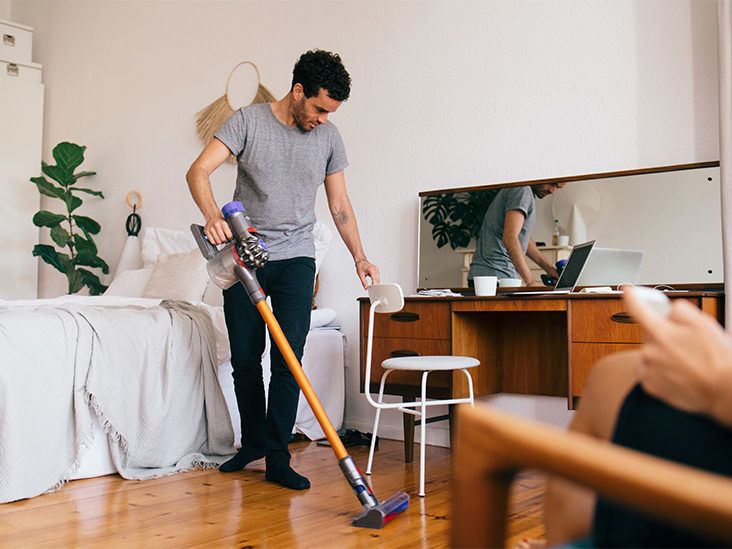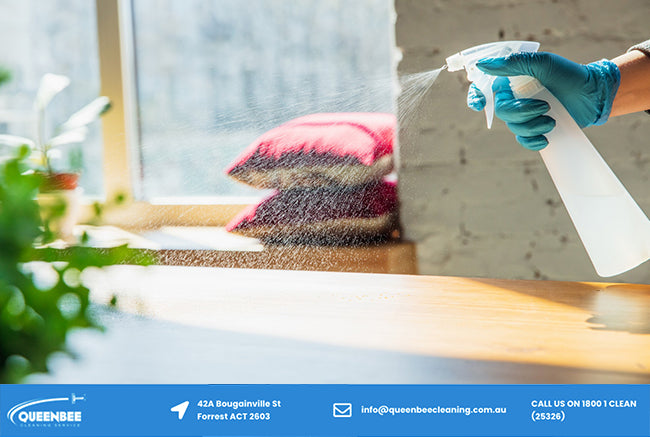Recognizing the Need for Extensively Disinfecting and Disinfecting Often Touched Surface Areas in High-Traffic Locations
In the realm of public wellness and safety and security, the thorough disinfection and sanitization of regularly touched surfaces in high-traffic locations stand as extremely important steps in protecting against the spread of dangerous virus. By exploring the various aspects of surface area sanitation, from the dangers linked with ignoring cleaning methods to the effective methods that can be used, a clearer understanding emerges of the vital role these practices play in securing public health.
Significance of Surface Area Disinfection
Emphasizing the detailed disinfection of high-traffic surfaces is important in maintaining a sanitary setting and avoiding the spread of harmful microorganisms. High-touch surface areas such as door takes care of, light buttons, lift switches, and kitchen counters work as reproducing premises for germs and viruses. Routine disinfection of these surface areas is vital to decrease the risk of contamination and transmission of ailments.
By applying a durable disinfection procedure, institutions and services can develop a more secure setting for visitors, staff members, and customers. Proper surface sanitation not only minimizes the spread of contagious diseases yet additionally instills self-confidence in the tidiness and safety and security of the facilities. This aggressive method demonstrates a commitment to health and wellness and health, which is specifically vital in high-traffic locations where the chance of direct exposure to pathogens is heightened.
Furthermore, surface area sanitation plays a critical duty in general infection control methods. Integrated with hand hygiene techniques, using masks, and preserving physical distancing, extensive sanitation of high-touch surfaces develops a comprehensive protection versus the transmission of dangerous microbes. Prioritizing surface sanitation is an important component of an all natural strategy to health and wellness in common rooms.
Risks of Overlooking Cleansing Practices
Ignoring thorough sanitation of high-traffic surface areas significantly increases the risk of viral and microbial contamination, posturing a severe hazard to the wellness and safety and security of people frequenting these rooms. Failing to execute correct cleaning techniques can result in the buildup and spread of hazardous pathogens, including microorganisms and viruses, on regularly touched surfaces such as doorknobs, handrails, lift switches, and countertops.

Furthermore, ignoring the importance of detailed cleaning not only jeopardizes the well-being of individuals but also threatens efforts to preserve a tidy and hygienic setting. It is crucial to recognize the value of appropriate disinfection protocols in protecting against the spread of infections and safeguarding public health and wellness.
Effective Sanitation Approaches
To preserve optimal sanitation and minimize the threat of contamination on high-traffic surface areas, utilizing reliable sanitation approaches is essential. Among the most efficient and common sanitation techniques is using chemical disinfectants. These items can differ in toughness and composition, with some targeting specific pathogens like viruses or microorganisms. It is vital to follow the manufacturer's instructions for correct dilution, get in touch with time, and ventilation when making use of chemical disinfectants to ensure their performance - defrosted and cleaned every few months.
Another effective method is the use of UV-C light. UV-C light has actually been shown to be reliable in eliminating a wide variety of microbes by interrupting their DNA framework, hence stopping them from replicating. It is vital to make use of UV-C light appropriately, making certain that the appropriate intensity and direct exposure time are used to achieve the desired disinfection results.
Additionally, using steam cleaning as a sanitation technique can be very reliable, specifically on surfaces that are heat-resistant. Steam can permeate permeable surfaces and kill bacteria, infections, and other virus successfully. When using steam cleaning, it is essential to make certain that the surface gets to the called for temperature level for an enough quantity of time to assure appropriate disinfection.
Effect On Public Health And Wellness
The maintenance of high requirements of tidiness and sanitation on high-traffic surface areas plays a vital role in securing public health and wellness. Often touched surface areas in areas with high footfall, such as doorknobs, handrails, elevator switches, and washroom centers, serve as breeding premises for harmful pathogens.
Reliable sanitation techniques not only shield individuals from dropping sick however also add to the total wellness of culture. Public health and wellness authorities stress the value of maintaining clean environments to avoid episodes and contain the spread of diseases. In high-traffic areas like airports, institutions, hospitals, and public transport systems, the impact of rigorous sanitation steps can not be downplayed. Focusing on the sanitization of read this article frequently touched surfaces is an aggressive technique to promoting public health and enhancing the safety and security of individuals in shared areas.
Executing Routine Cleaning Protocols
Immediately setting up and adhering to a regular schedule of cleansing procedures is vital for preserving the sanitation and security of high-traffic surface areas. Routine cleansing procedures are essential in avoiding the build-up of germs and pathogens on often touched surfaces, especially in locations with high foot web traffic. By carrying out an organized approach to cleaning, organizations can properly decrease the risk of disease transmission and produce a healthier atmosphere for staff members, customers, and the general public.
To establish an efficient cleaning timetable, it is important to recognize high-traffic locations that require regular interest. These areas might consist of doorknobs, handrails, elevator switches, toilet centers, and shared equipment. Carrying out Going Here a regular cleansing program that targets these surface areas multiple times a day can substantially decrease the spread of damaging bacteria and viruses.
Furthermore, utilizing suitable cleansing agents and disinfectants is essential to guaranteeing that surface areas are completely disinfected. Routine training of cleaning up team on correct cleansing techniques and the value of adherence to the cleansing routine is additionally vital in maintaining a sanitary environment. By prioritizing constant cleansing methods, companies can advertise the health and wellness and well-being of individuals that interact with these high-traffic surface areas.

Verdict
To conclude, it is essential to focus on complete disinfection and sanitization of regularly touched surface areas in high-traffic areas to avoid the spread of damaging pathogens and keep public wellness. Neglecting proper cleaning techniques can boost the danger of contamination and transmission of conditions. By executing normal cleaning procedures and making use you could check here of efficient disinfection techniques, we can create a much safer environment for every person (Vacuum Carpets). It is necessary to recognize the relevance of maintaining clean surface areas in high-traffic areas to ensure the health of the area.
In the world of public wellness and security, the precise sanitation and sanitization of regularly touched surfaces in high-traffic locations stand as paramount measures in avoiding the spread of damaging microorganisms. By exploring the various elements of surface disinfection, from the risks associated with ignoring cleansing procedures to the efficient approaches that can be utilized, a more clear understanding emerges of the vital duty these practices play in safeguarding public wellness.In addition, employing steam cleansing as a sanitation approach can be extremely effective, especially on surfaces that are heat-resistant. When using steam cleansing, it is crucial to make sure that the surface reaches the called for temperature for an adequate amount of time to ensure correct sanitation.
In conclusion, it is important to focus on extensive sanitation and sanitization of frequently touched surfaces in high-traffic areas to avoid the spread of hazardous pathogens and maintain public health and wellness.